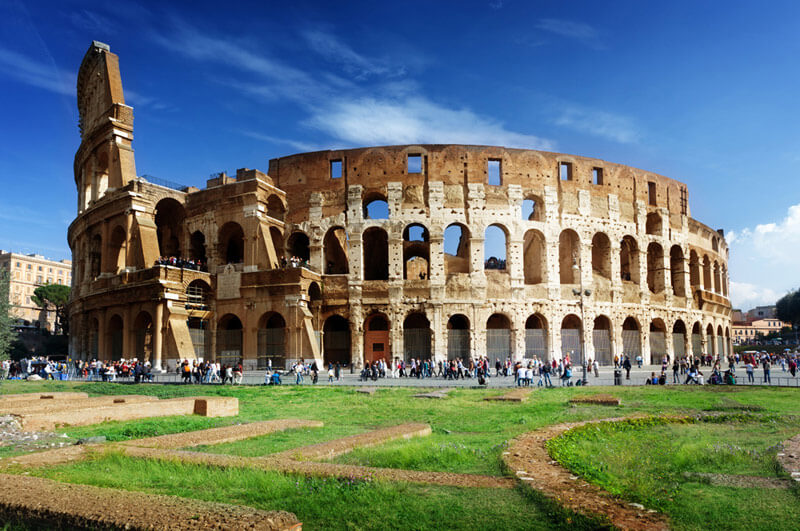
The Trevi Fountain is one of the most beautiful places in Rome. It is better to see the fountain in the morning or late evening - at this time it is especially mesmerizing. Do not forget to throw a coin into it and make a wish! This fountain is the largest and most popular in Rome. A majestic and spectacular landmark, it looks more like a stone stage of an ancient play than a source of clean water. Convenient location and incredible beauty attract many guests to the Italian capital every day. There are always many people around it.


The Trevi Fountain has an interesting history. In 19 B.C. Emperor Octavian Augustus' son-in-law Marcus Agrippa decided to build an aqueduct to deliver drinking water to Rome from the slopes of the Albanian mountains. The aqueduct was 21 kilometers long. According to legend, a virgin (in Latin "virgo") showed the spring to Roman soldiers, so the aqueduct was called "Aqua Virgo" - the water of the virgin.

For centuries, water in Trevi Square could be drunk from an ordinary spring that flowed into a stone bowl. In 1629, Pope Urban VIII decided to decorate the center of the capital with more elegant architecture and commissioned the famous Baroque master Bernini to create a fountain. But Urban VIII soon died and the work was stopped. In 1732, by order of Pope Clement XII, the fountain project was created by the architect Niccolò Salvi. The sculptors Pietro Brachi and Filippo Della Valle participated in the work. All the work was completed in 1732.
Behind the fountain is the Poli Palace (named after its last owner). It and the fountain form a single architectural ensemble. Currently, the palace houses the National Institute of Graphic Arts.
The name of the fountain comes from the Latin word "trivium", which means the intersection of three streets. These are the streets: Via de Crocic, Via Poli and Via delle Murate.
The central figure of the fountain is the Ocean. He rides on a chariot in the shape of a shell, pulled by two hippocampi (horses with fish tails).

The Ocean is the embodiment of a huge river. It flows around the earth, and all the streams of water flow out of it. The crest of the ocean is a symbol of wisdom and strength. The horses are controlled by tritons. One horse is calm and trusting, the other is restless. They speak of the changing nature of the sea.
To the left of the ocean, in a niche, is a statue of the goddess of abundance. She holds a horn full of various gifts. To the right, in the second niche, you can see a statue of the goddess of health. In her right hand, the goddess holds a vial surrounded by a snake.
Above them are two bas-reliefs. On the left is Marcus Agrippa, who built the Aqua Virgo aqueduct:

The right bas-relief depicts the moment when the Virgin points the Roman soldiers to the spring.

At the top of the Poli Palace you can see the coat of arms of Pope Clement XII. It is decorated on both sides with two statues of glory, and at the bottom are allegorical statues representing the four seasons, as well as information about the foundation fountain.

The most famous tradition associated with the Trevi Fountain is throwing a coin into it (a kind of offering to win the hearts of the gods and spirits). As they say, if you throw one coin, you will definitely return to Rome, if you throw two, you will meet your soulmate, if you throw three, you will get married, if you throw four, you will get rich. At this time, you should turn your back to the fountain, close your eyes and throw the coin with your right hand over your left shoulder (or with your left hand over your right shoulder). Spouses and lovers who come there can drink a few sips of water from the so-called "lovers' pipes" and further strengthen their bond.
Every day, about 3 thousand euros are collected in the fountain. This money is collected every evening and given to a charity.
Please note: if you take a coin out of the fountain, you will be fined several hundred euros. It is also forbidden to eat or drink near it.
The fountain is about 50 meters wide and 26 meters high.
There are many pickpockets among those gathered at the fountain. So be careful not to get anything stolen.
This is what the Trevi Fountain looks like in the evening:

The Trevi Fountain's address is Trevi Square.
How to get there:
- by metro line A - stop Spagna or Barberini.
© 2019-2024 All rights reserved.